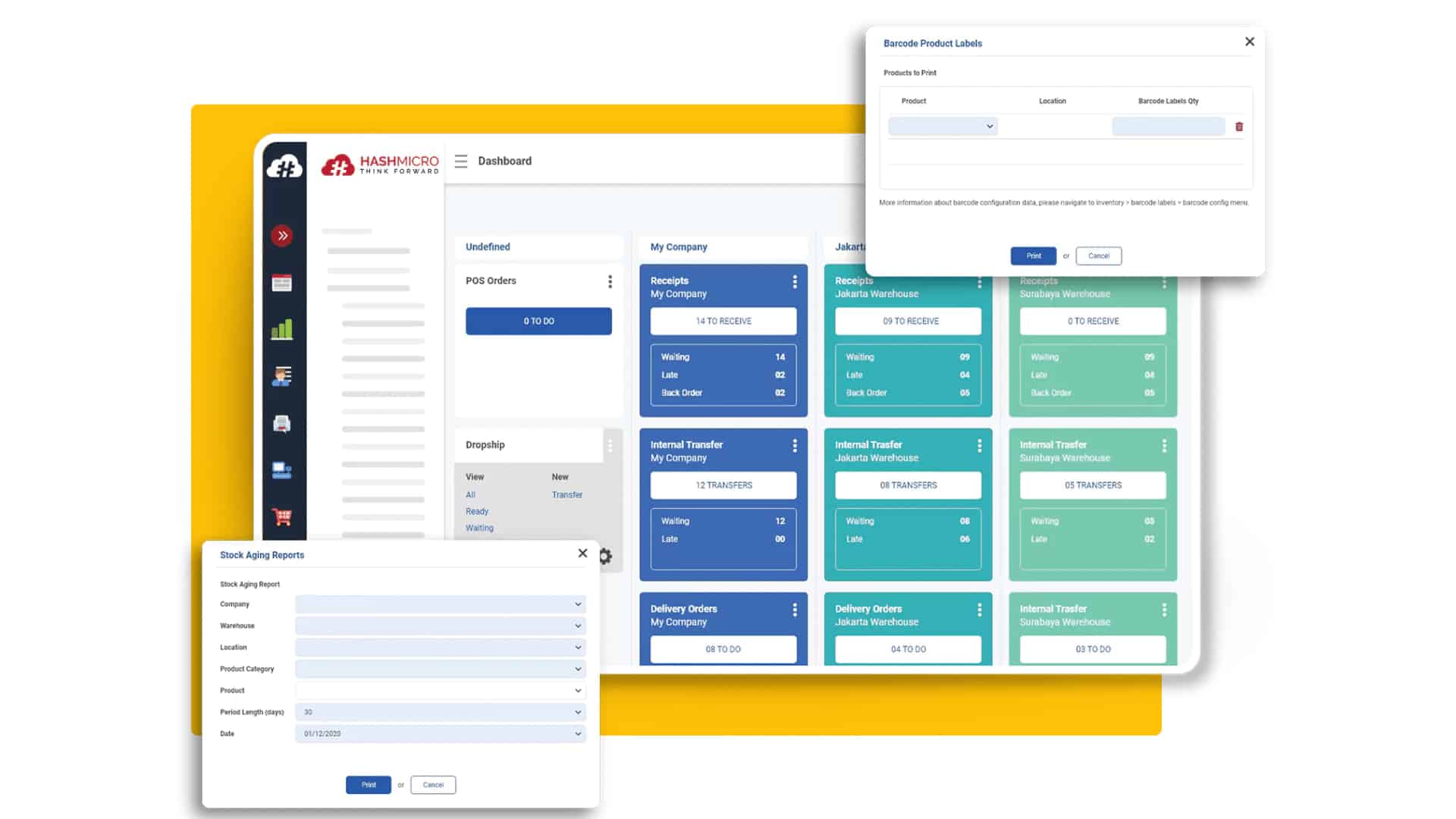Kumusta, my fellow Filipino business owners! Have you ever found your warehouses overloaded with unsold stock or struggled with cash tied up in inventory that isn’t moving? Or maybe you’re dealing with costly production delays because materials arrived too late or too early.
What if you could run leaner, reduce waste, and improve your bottom line by having exactly what you need, exactly when you need it? Many businesses face the problem of balancing supply with demand and optimizing resources daily. This article will guide you through a strategic solution that can help address these pain points and bring greater operational efficiency to your business.
Key Takeaways |
Table of Contents

What is Just-in-Time (JIT) Inventory Management?

Just-in-Time (JIT) Inventory Management streamlines inventory by ordering and receiving goods only when needed for production or sales. This strategy reduces inventory holding costs and prevents risks like overstocking tied up in stock. JIT aligns ordering processes with customer demand, ensuring a balance between production schedules and supply orders.
This alignment ensures businesses maintain only necessary safety stock levels, significantly reducing costs and inefficiencies associated with large inventories. JIT minimizes storage space requirements and capital investment in unused goods and prevents overproduction. Furthermore, businesses can operate more efficiently, focusing on essential tasks instead of managing excess inventory.
How Does Just-in-Time Inventory Work?
Just-in-Time (JIT) Inventory Management operates by integrating market demand directly into production and procurement processes, keeping inventory levels lean and well-timed. Production is adjusted in real-time instead of relying on predictions, allowing companies to produce only what’s necessary, reducing the risk of excess inventory.
The synchronization between production and procurement is crucial in JIT. Once production needs are defined by current demand, procurement schedules are aligned to ensure materials arrive precisely when needed. This synchronization reduces holding costs and prevents spoilage, especially in industries with limited product shelf lives.
JIT’s emphasis on real-time responsiveness significantly enhances operational efficiency. Companies can reduce unnecessary storage and holding costs by closely coordinating supply with demand. This strategy enables businesses to maintain agility in changing markets while minimizing waste and optimizing resource allocation.
If you were wondering how to use software to implement Just-in-Time (JIT) principles, HashMicro’s Cloud Inventory Software can provide the solution. It helps you synchronize supply with demand, reduce storage costs, and optimize resource use efficiently.
Advantages of JIT Inventory Management
Adopting Just-in-Time (JIT) Inventory Management brings numerous benefits that enhance both efficiency and profitability. These advantages streamline operations and optimize financial performance.
Advantages of JIT Inventory Management include:
- Reduction of Inventory Costs: JIT aligns inventory levels with demand, reducing capital tied up in unsold stock. This freed-up capital can be better utilized elsewhere or act as a buffer against market fluctuations.
- Enhanced Operational Efficiency: JIT ensures production occurs only in response to demand, minimizing unnecessary activities and downtime, which smooths operations.
- Improved Product Quality: A feedback loop in JIT systems identifies and resolves quality issues immediately, reducing defects and improving overall product quality.
Implementing JIT transforms business operations by lowering inventory-related costs and improving efficiency and product quality. It helps businesses respond quickly to market changes, ensuring competitiveness in today’s fast-paced environments.
Disadvantages of JIT Inventory Management
While Just-in-Time (JIT) Inventory Management offers significant benefits, it also presents challenges businesses must manage carefully. These disadvantages stem from dependencies and the adjustments needed for successful implementation.
Key disadvantages of JIT Inventory Management include:
- Vulnerability to Supply Chain Disruptions: JIT relies heavily on precise timing, making it susceptible to issues like supplier delays or transportation disruptions, which can pause production.
- High Coordination and Reliability Requirements: JIT requires high levels of coordination and reliability from suppliers, which can be challenging due to external factors beyond the company’s control.
- Transition Challenges: Implementing JIT involves major operational changes, including staff training and redesigning logistics frameworks, which can be time-consuming and costly.
Despite these disadvantages, businesses must weigh the potential for streamlined operations and cost savings. Companies can mitigate risks by developing strong supplier relationships and investing in effective training programs to fully leverage JIT Inventory Management’s benefits.
What Kind of Companies Use JIT Inventory?

Just-in-Time (JIT) Inventory Management is particularly advantageous for industries that have significant inventory costs and need high levels of operational efficiency. Here’s a deeper look into the types of companies that might need to use this system:
- High-Volume Manufacturers: Industries like automotive and electronics, where inventory costs significantly impact finances, benefit from JIT by minimizing the capital tied up in inventory and enhancing production efficiency.
- Businesses with Variable Demand: Retail and fashion companies, where demand can fluctuate sharply due to seasons or trends, use JIT to adjust quickly to market changes without overstocking.
- Custom Product Companies: Firms that offer customized products benefit from JIT by aligning production with actual orders, reducing the risk of excess inventory.
- Industries Needing High Customization: Sectors such as bespoke furniture or specialized machinery that require rapid adaptation to customer specifications can maintain efficiency with JIT by minimizing pre-produced stock.
By implementing JIT, companies across these varied sectors can maintain leaner inventories, improve cash flow, and enhance their ability to meet customer demands efficiently and effectively.
History and Evolution of Just-in-Time Inventory Management
The concept of Just-in-Time (JIT) Inventory Management originated in post-World War II Japan (1930’s) as a response to resource scarcity. Developed by Taiichi Ohno at Toyota, JIT aimed to eliminate waste and improve productivity by ensuring materials were supplied only as needed for production. What’s more, this approach quickly showed significant improvements in efficiency and cost savings, leading Toyota to widespread success.
By the late 1970s and early 1980s, industries in the United States embraced JIT principles, expanding them beyond automotive manufacturing and evolving into lean manufacturing. Multiple sectors worldwide have since adopted this methodology, leveraging technological advances and data analysis to enhance supply chain efficiency.
Questions to Consider Before Implementing JIT Inventory Management
Before implementing Just-in-Time (JIT) Inventory Management, there are several crucial questions you should consider to ensure that your business is ready for this transition. These questions revolve around your supply chain’s robustness, your operational flexibility, and the reliability of your forecasting and supplier relationships:
-
- Can my products be manufactured or supplied quickly enough? Assess if the turnaround times align with JIT’s demand-driven approach.
- Is my demand forecasting accurate? You need confidence in your sales forecasts, which should account for fluctuating consumer demand.
- Is my supply chain flexible enough to adapt to disruptions? This includes potential issues like supplier disruptions or natural disasters.
- Are my suppliers reliable and capable of delivering on time, every time? Supplier reliability is crucial for JIT as inventory levels are kept minimal.
- Is my workforce committed and sufficiently trained? A JIT system requires a thorough understanding and adaptability from all divisions. Employees may need to be cross-trained to handle various roles.
- Do I have the necessary technology to support JIT? Ensure your inventory management software and other technological infrastructures can support JIT operations.
These questions help assess whether your organizational structure and operational capabilities align with JIT Inventory Management. Moreover, considering these factors allows you to make an informed decision about whether JIT is a viable strategy for your business.
HashMicro JIT Inventory Solutions to Boost Efficiency

HashMicro embeds Just-in-Time (JIT) capabilities into its Inventory Management System, tailoring it to enhance inventory control and optimize supply chain operations. This integration is particularly beneficial for businesses to streamline their inventory processes and reduce overhead costs associated with excess inventory.
Features of HashMicro IMS:
- Reduction of Inventory Costs: By aligning inventory levels with demand, HashMicro minimizes excess inventory, improving financial flexibility and capital use.
- Enhanced Operational Efficiency: The system automates inventory processes, reducing manual efforts and increasing operational efficiency from order placement to delivery.
- Improved Product Quality: Real-time tracking enhances quality control, ensuring products meet standards before reaching customers.
- Customization and Flexibility: HashMicro’s system adapts to various industries, allowing businesses to respond quickly to market changes.
- Advanced Technological Integration: Utilizing cutting-edge technology, the system provides accurate inventory data and insights for informed decision-making.
Unlike most software, HashMicro incorporates JIT principles to reduce waste and maintain optimal inventory levels, leading to business growth and customer satisfaction.
Conclusion
Just-in-Time (JIT) Inventory Management streamlines inventory processes, ensuring materials are supplied only when needed. By adopting JIT, businesses reduce inventory costs, enhance operational efficiency, and adapt to fluctuating market demands. This method benefits sectors like manufacturing and retail, where managing costs and responsiveness is crucial.
HashMicro integrates JIT capabilities within its Inventory Management System, providing businesses with tools to minimize waste and improve product quality. Additionally, HashMicro’s inventory software offers enhanced data accuracy and strategic insights for informed decision-making. To explore how HashMicro can transform your inventory management, request a free demo today.
Frequently Asked Questions
-
-
What is the meaning of just-in-time production?
Just-in-time (JIT) production is a manufacturing strategy that aligns raw material orders with production schedules. Jit can increase efficiency and reduce waste by receiving goods only when needed.
-
What is the basic concept of just in time?
The basic concept of just-in-time (JIT) is to minimize inventory and reduce carrying costs. JIT focuses on purchasing and producing items exactly when needed in the production process to meet customer demand.
-
What is the purpose of JIT just-in-time production?
The purpose of JIT (Just-in-Time) production is to streamline manufacturing processes by reducing lead times and minimizing inventory levels. This approach helps in reducing waste and improving the efficiency of production operations.
-





































